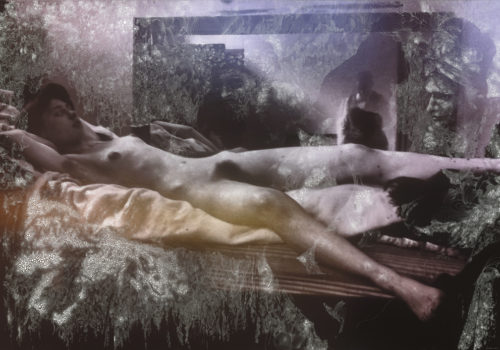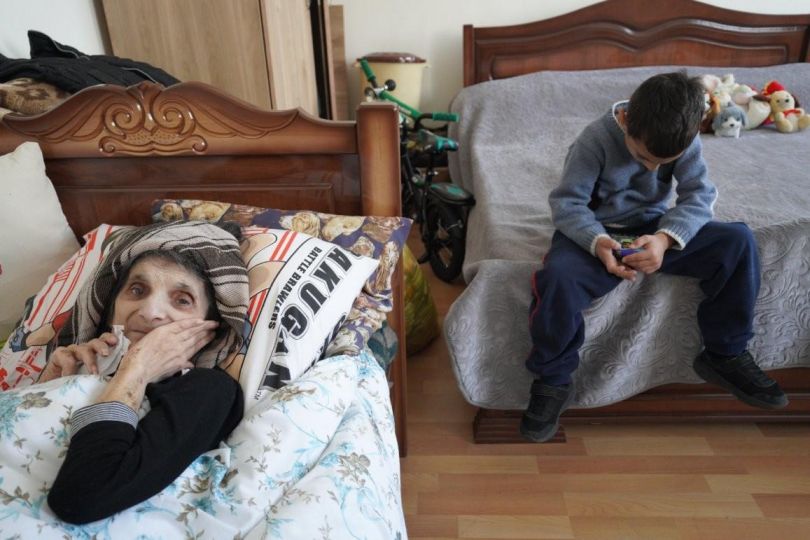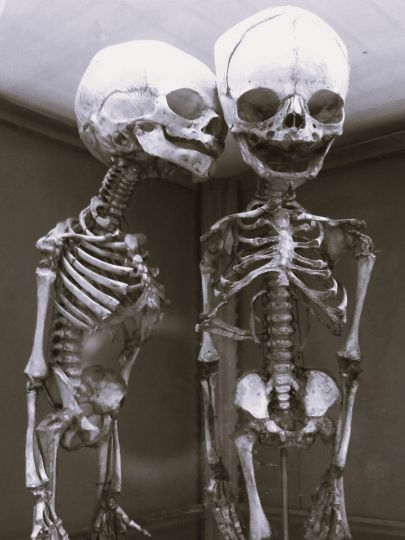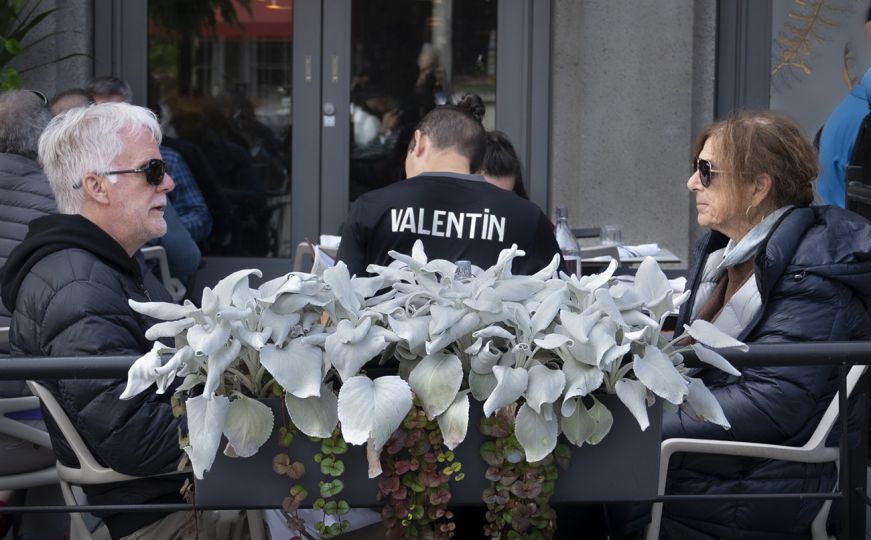Bremer’s technique is novel and utterly hybrid. Using various inks, he draws directly on slightly blurry c-print enlargements of photographs, and often adds splotches and streaks of photographic dye. Almost always, the underlying photographic images have much to do with personal and family history; a best friend from Bremer’s teenage years, a shot of himself as a kid, a view of a room taken from under his grandmother’s piano, his family on vacation, a former girlfriend.
These are the unpretentious snapshot images, the family album images, the photographic mementoes of a life that Bremer meticulously and obsessively draws on. So meticulously, in fact, and with such fine, tiny lines that you figure he either uses a magnifying glass or is in a trance (neither is the case). In some of Bremer’s works the underlying image is quite clear, while in others it’s almost totally obscured, but in any event one sees it through a scrim or a veil of intense surface activity, which can be at once elaborately ornamental, psychedelic, playful (replete with suggestions of doodling), turbulent, and downright magical. Always, Bremer’s found photographs become dreamlike and fantastical, and two opposite impulses are fused; documentation and hallucination. Moreover, while Bremer admits to a high level of automatism in devising his drawings, you also sense that this automatism involves a great deal of complex human feeling, ranging from harrowing fears and losses to whimsy and blissful response. (Excerpted from “The more you look, the more you see” by Gregory Volk, 2004)
Utilizing the artist’s signature style of obsessively applied dots of paint onto a photographic surface, Bremer renders his subjects in breathtaking detail. Ranging in theme from nudes to landscapes, still life to family, and finally, to revolution, the uniting element here is the artist’s capability to combine imagery from art of the Dutch Golden Age (which surrounded him during his youth in Amsterdam) with the seductive, dream-like abstractions that he lays over the glossy surfaces of his appropriated photographs.
In the work illustrated here, The Small Second Doll, 2010 Bremer re-photographed a 19th Century photograph by George Hendrik Breitner from the Rijksmuseum’s archive. Breitner was a painter who was very inspired by Rembrandt, and like him, depicted women realistically fleshy and imperfect. Breitner took the original photograph to be used as a reference for his own painting. Sebastiaan Bremer, in turn, re-photographed the Breitner photo, and painted a nude torso derived from the Rembrandt etching Negress Lying Down, 1658, over the nude model in the original photograph, thus creating a strangely surreal, Bellmer-esque composition of intrigue and fantasy.
Sebastiaan Bremer lives and works in New York. He studied at the Vrije Academie, The Hague, and Skowhegan School of Art and Sculpture, Maine. He has published two major catalogs: Monkey Brain (2003), and Avila (2006). His work is included in the collections of the Museum of Modern Art, New York, and the Victoria and Albert Museum, London, among many others.
Gilles Decamps
Edwynn Houk Gallery
745 Fifth Avenue
New York NY 10151
















